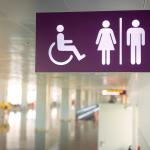
Common Questions About the Detection of Fibroids
Do you experience heavy periods, severe cramps, frequent urination, or low energy? These symptoms may indicate the presence of uterine fibroids, a common type of noncancerous growth that develops in or on the uterus.
Although not generally considered dangerous, fibroids can negatively impact surrounding organs, impact fertility, and cause a range of painful symptoms.
Common fibroid symptoms include:
- Heavy periods
- Prolonged menstruation lasting more than 10 days
- Bleeding between cycles
- Anemia, which can lead to fatigue
- Pain during intercourse
- Frequent urination
- Constipation and/or bloating
- Pain in your pelvis or lower back
- Increased menstrual cramping
- Protruding belly mimicking pregnancy
Receiving an accurate medical diagnosis for fibroids is extremely important. Many fibroid symptoms are similar to those of other, more dangerous health conditions that need to be ruled out. Some of these conditions can be life-threatening. If you believe you have fibroids, we recommend visiting your doctor as soon as possible.
When you visit, your doctor will likely perform a pelvic exam and order medical imaging. An ultrasound or Magnetic resonance imaging (MRI) study can confirm the presence of fibroids and offer valuable information about their size, number, and location. After this, you can discuss your treatment options.
We want you to be aware that non-surgical fibroid treatment exists which can eliminate your symptoms, preserve your uterus, and quickly get you back to daily activities. Below, we answer several common queries about the detection of fibroids. We also discuss a state-of-the-art, outpatient treatment known as Uterine Fibroid Embolization (UFE).
How Are Fibroids Diagnosed?
“Uterine fibroids are often first detected during a routine pelvic exam,” explains Yan Katsnelson, M.D. “Your doctor may also suspect fibroids based on symptoms like heavy periods and severe cramps. However, medical imaging is necessary to diagnose fibroids accurately.”
Most commonly, an ultrasound exam is ordered to confirm their presence. Sometimes, an MRI is also needed to gather additional information about the fibroids. In rare cases, hysterosonography (a type of sonogram that involves saline infusion) or hysteroscopy (a surgical procedure that provides a direct line of sight into the uterus) can be helpful. However, hysterosonography or hysteroscopy are used only in rare cases.
Once diagnosed, we recommend visiting a fibroid specialist to learn about your full range of fibroid treatments –– both surgical and non-surgical.
Can a CT Scan Detect Fibroids?
Although uterine fibroids can sometimes be detected on a Computerized Tomography (CT) scan, this is not considered the most accurate method. Most often, only calcified fibroids appear on CT scans. The preferred imaging method for detecting fibroids is an ultrasound or MRI.
Does a Sonogram Show Fibroids?
The terms sonogram and ultrasound tend to be used interchangeably. More accurately, an ultrasound study produces an image known as a sonogram. A sonogram image can show uterine fibroids.
Can Fibroids Be Seen During a Pap Smear?
A Pap smear is a test that looks for unusual cell changes on your cervix. It is typically performed alongside a routine pelvic exam. Although a Pap smear itself cannot diagnose fibroids, they can often be detected by your doctor when performing one.
Can You See Fibroids on an Ultrasound?
In most cases, fibroids are visible on an ultrasound. Ultrasound is a non-invasive diagnostic technique that uses sound waves to produce live images from inside your body. When more detailed information is required, an MRI study is also ordered.
Can an MRI Detect Fibroids?
MRI exams can detect uterine fibroids and provide additional information relating to their size, number, and location. These factors can help determine which type of treatment, if any, is recommended.
MRI imaging produces more detailed images than ultrasound by using magnetic fields and radio waves. Though painless, an MRI requires you to lie still for an extended length of time within an enclosed space. If you are concerned about your ability to do this, talk to your doctor.
Can You See Fibroids on an X-Ray Image?
Although calcified or large fibroids can sometimes be seen on X-Ray images, they do not always show up. Ultrasound and/or MRI exams provide more accurate imaging for uterine fibroids.
Can a Doctor Feel Fibroids During a Pelvic Exam?
Sometimes, uterine fibroids can be felt during a pelvic exam. Your doctor may notice misshapen areas on your uterus or feel that your uterus is enlarged even though you’re not pregnant. There are usually three to four parts of a pelvic exam: the external, internal check, bimanual, and rectovaginal. During these exams, your doctor will look for any unusual changes including uterine tumors like fibroids.
Can You Feel Fibroids Through Your Stomach?
Depending on size, number, and location, fibroids can be felt by some women externally. More likely, you may notice that your uterus feels or appears swollen. As a result, your clothing may fit differently, or you may have difficulty bending over and comfortably moving around.
In extreme cases, an enlarged uterus due to fibroids can resemble a second-trimester pregnancy. This potentially distressing symptom can impact body image and self-esteem.
Can You Feel Fibroids With Your Finger?
You likely won’t be able to feel fibroids externally with your finger. However, your doctor may be able to feel fibroids during a pelvic exam. Keep in mind that this is not always possible, since not all fibroids are located in accessible areas of the uterus. They may also be outside of the uterus, beyond your doctor’s reach.
How Do You Treat and Get Rid of Fibroids?
If you’ve been diagnosed with uterine fibroids, the good news is that effective, minimally invasive treatment exists that can alleviate your symptoms. Unfortunately, many women believe that their only treatment option is a hysterectomy, the complete surgical removal of the uterus. Others think that myomectomy, the surgical removal of fibroids, is their best option. Most likely, neither of these beliefs is true.
At USA Fibroid Centers, we offer a non-surgical, outpatient treatment called Uterine Fibroid Embolization (UFE). UFE can shrink your fibroids, relieve your symptoms, preserve your uterus, and quickly get you back to normal daily activities. Treatment takes less than an hour, and most women fully recover within one to two weeks.
During Uterine Fibroid Embolization:
- You will be offered a light sedative and local anesthesia
- Using live ultrasound guidance, your fibroid specialist makes a tiny incision into your numbed upper thigh, then places a catheter (less 1mm in diameter) into the uterine artery
- Next, small embolic materials are injected through the catheter that aim to block nutrients and oxygen to the fibroid
- After treatment, your fibroid(s) can shrink, and symptoms will resolve over time
Schedule an Appointment at USA Fibroid Centers Today!
At USA Fibroid Centers, we are passionate about women’s health. To learn more about fibroids and Uterine Fibroid Embolization, schedule an appointment with one of our leading fibroid specialists today.
We offer dozens of clinic locations across the country, along with telemedicine options. We also want you to know that fibroid treatment is covered by most major health insurance plans.
Don’t just put up with uncomfortable fibroid symptoms. We look forward to helping you take back control of your life. To get started, call 855.615.2555.



